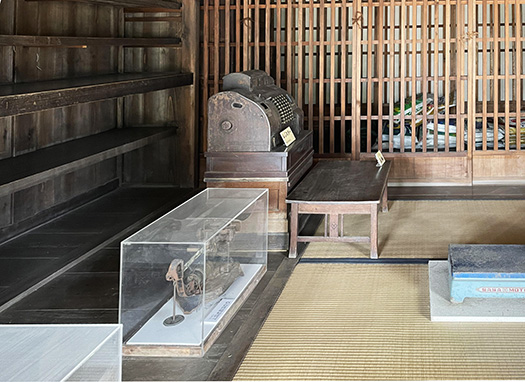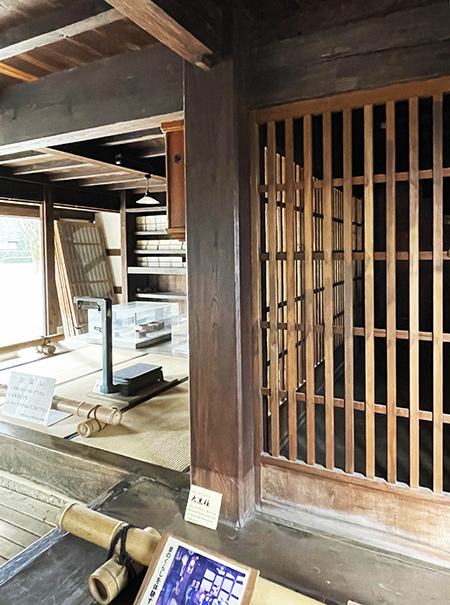


江戸期というのは本来海洋国家であった日本が貿易による海外発展を制限して、国内治安優先で作り上げた社会だった。そのなかで経済は土地執着性の強い武家の価値感が主体的で、基本的にコメ生産中心の考え方で各藩毎の経済規模を、万石単位というコメ生産基準で定めていた社会。
しかし、コメ生産は江戸幕府体制が確立して100年後ほどの1700年前後には総人口3,000万人に対してほぼ調和する3,000万石生産が達成されて、その後は幕末までそのコメ生産規模が安定して推移したとされる。人口1人あたり年間消費は1石というのが単位の計算基準。
で、基本になるコメ生産は増えずに一定に定まってくると、それ以外の商品作物に農地を利用するようになるのが自然の成り行き。そういったなかで、開明的な藩などが大阪の全国流通市場を睨んで積極的に全国規模での「名産」づくりに取り組んでいった。江戸中期以降、コメ生産以上にこうした商品作物の多様化が進展した。日本各地の文化的多様性はこのことが裏付け。
社会固定的な米一本足経済から、社会全体の経済発展の結果、多様な商品作物が経済の中心領域に推移していったということだろう。多様な商品作物毎に最適化された肥料を選別的に商う商家というビジネスが成立するほどになっていったのだろう。幕末期に開国に舵を切っていく政治変動はこうした経済発展の必然だったともいえるのだろう。
わたしの生家、父は戦後期には北海道の商品作物産品を買い付けて大阪の市場に対して送るビジネスを行っていた。小作解放によって得られた自作農の地位だけでなく、いわば商品作物流通、それも全国規模での市場構造に着目して、投機的なビジネスを行っていたというのです。
一時期は親の代から根付いた北海道栗沢を中心とした地域で「ユリ根」を集中生産して大阪まで送りつけて利を得ようとした。けれど、商品市場では「暴落」という事態もまま発生する。貨車を仕立てて大阪まで全財産を賭けてユリ根を大量に送ってから至急電報で「大阪の市場価格暴落!」の知らせが入って、急遽、貨車を新潟で停止させて、それをまだ暴落していなかった関東に送ることで危機を免れたという。
あまりにも投機的な危険性に深く気付いて、その後、札幌での食品製造業に進出していくきっかけだったと父のコトバで聞いたことがある。
街道筋の商家という共通性のある浦和の古建築をみることで、江戸から今日に至る農本主義から資本主義経済への転換期の民衆の生活史を具体的にみることができたように思う。そのままわが家の家系の推移もシンクロさせてみていた。非常に生々しい記憶なども再生されてきてしまった。
北海道内の住宅史推移なども見てきていたけれど、むしろこういった商家の生業感のほうが自分的にはよりリアリティがあり、取材の観点でもより奥行きを感じさせられる。
English version⬇
Social Transformation from Farmerism to Capitalism: Machiya in Urawa-juku, Nakasendo – 9
A major social transformation to a commodity distribution economy in a concentrated city. This group of merchant houses visualizes the transformation from the Edo period to the present day. …
During the Edo period, Japan, originally a maritime nation, restricted overseas development through trade and created a society that prioritized domestic security. In this society, the economy was based on the values of the samurai clans, which were strongly attached to the land, and the economic scale of each clan was basically based on rice production, which was defined by the rice production standard of 10,000 goku.
However, around 1700, about 100 years after the establishment of the Edo shogunate, rice production reached 30 million koku, which was in harmony with the total population of 30 million, and remained stable until the end of the Edo period. The standard for calculating the unit is that each person in the population consumes one stone of rice per year.
When rice production, which is the basis of the unit, was fixed at a certain level without increasing, it was natural to think of using farmland for other commodity crops. In such a situation, open-minded clans and others actively worked to produce “specialty products” on a national scale, with an eye on the nationwide distribution market in Osaka. From the mid-Edo period onward, the diversification of such commodity crops progressed beyond rice production.
This may be the result of the economic development of society as a whole, which has shifted from a fixed, single-footed rice economy to one in which a variety of commodity crops are at the center of the economy. The business of merchants who selectively traded fertilizers optimized for each of the various commodity crops may have been established. The political changes that led to the opening of Japan to the outside world at the end of the Edo period can be seen as an inevitable consequence of this economic development.
In the postwar period, my father’s family was engaged in the business of buying commodity crops from Hokkaido and sending them to the Osaka market. He was engaged in a speculative business, focusing not only on the status of tenant farmers, which had been gained through the liberation of smallholdings, but also on the distribution of commodity crops, so to speak, and the structure of the market on a national scale.
For a time, he tried to gain profit by producing “lily root” intensively in the area centering on Kurisawa, Hokkaido, where it had taken root since his parents’ generation, and sending it to Osaka. However, the commodity market was prone to “crash prices. After sending a large quantity of lily bulb to Osaka with all his money, he received a telegram immediately saying, “The market price of lily bulb in Osaka has plummeted! The company was able to avoid the crisis by stopping the wagons in Niigata and sending them to the Kanto region, where the market had not yet plummeted.
I have heard my father say that this was the beginning of his later foray into the food manufacturing business in Sapporo, as he was deeply aware of the dangers of being too speculative.
By looking at the old architecture of Urawa, which has the commonality of being a merchant house on a street, I think I was able to see in concrete terms the history of the people’s lives during the transition from an agrarian to a capitalist economy from the Edo period to today. I was also able to synchronize the transition of my family’s history. I was able to replay some very vivid memories.
Although I have seen the history of housing in Hokkaido, I feel that this kind of business of a merchant family is more realistic and gives me a greater sense of depth from the perspective of the research.
Posted on 7月 18th, 2023 by 三木 奎吾
Filed under: 住宅マーケティング, 日本社会・文化研究







コメントを投稿
「※誹謗中傷や、悪意のある書き込み、営利目的などのコメントを防ぐために、投稿された全てのコメントは一時的に保留されますのでご了承ください。」
You must be logged in to post a comment.